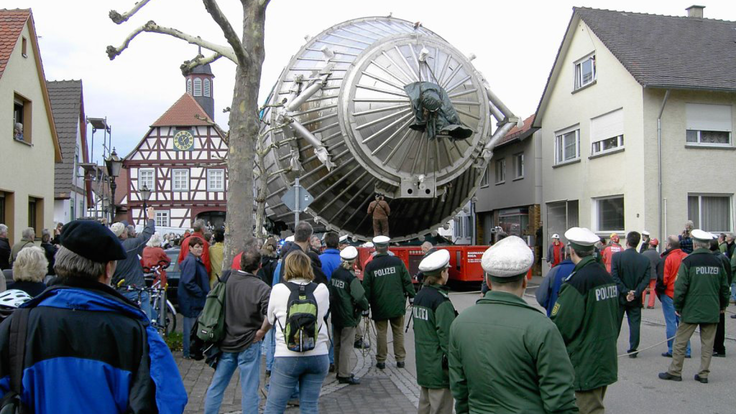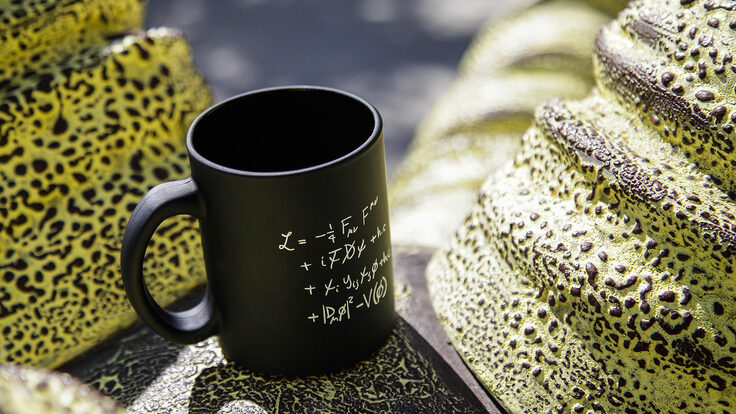First discovered in the 1990s, dark energy has come to feel like a familiar face of the cosmos. Astronomers first imagined this unseen entity as a constant presence that has, since the beginning, gently guided the universe on its quest toward infinite expansion. Now, though, it’s starting to seem like a stranger.
“We’re in the situation where we know something weird is going on, but we don't know what it is, and we don't know why it's happening,” says Phil Marshall, a senior scientist at SLAC National Accelerator Laboratory and Deputy Director of Operations at the NSF-DOE Vera C. Rubin Observatory.
Since the 1920s, scientists have known that the universe is growing. This observation grounded the theory that the universe began as a single point that rapidly expanded in a Big Bang.
At first, the expansion seemed boundless. But then scientists uncovered an important caveat of the cosmos: It seemed to harbor some invisible form of matter that added to the mass of distant galaxies, holding them intact as they spun.
In the 1930s, astronomer Fritz Zwicky named this matter “dark matter,” and in the 1970s, astronomer Vera Rubin discovered indirect evidence of its existence. Scientists theorized that dark matter, which exerts a gravitational pull on everything around it, could counteract the repulsive force of the Big Bang and would someday doom the universe to collapse back in on itself in a “Big Crunch.”
Then in 1998, two groups of scientists announced a new finding: Far from being slowed by the pull of dark matter, the universe was actually expanding at an accelerating rate. This observation suggested that something other than the Big Bang was pushing the universe to grow. Something that they called “dark energy” must also play a cosmically vital role; while dark matter was binding galaxies together, dark energy was ripping them apart.
“There’s definitely a lot of excitement. The universe is really throwing a surprise at us.”
For decades, cosmologists’ leading model for this galactic push and pull has been the Lambda-CDM model. According to this simplest model, dark energy is a fact of the universe—a mechanism that will remain constant over time.
Then, last year, the Dark Energy Spectroscopic Instrument uncovered a hint that all is not what it seems.
Sat atop Kitt Peak in Arizona, DESI studies the light from stars each clear night with an array of thousands of swiveling robotic eyes. Because light doesn’t travel instantaneously, when we look back at the most distant galaxies with a tool like DESI, we’re really looking back at freeze-frame moments from our universe’s distant past. Looking at light that originated at different points in time, DESI was able to stitch together a flip-book of snapshots from the early universe until now. They then combined that data with studies of supernovae from another survey, the Dark Energy Survey. And what they found was that for the past few billion years or so, dark energy seems to have been weakening over time.
Scientists were skeptical of the 2024 result; it would take compelling evidence to upend their decades-old paradigm of the cosmos. But on March 19, DESI’s team presented new results at the Global Physics Summit in Anaheim, California. One year and nine million more galaxies after their earlier announcement, the hypothesis that DESI is seeing a change in dark energy carries more weight than ever before.
“There’s definitely a lot of excitement,” says Alexie Leauthaud, co-spokesperson for the DESI collaboration and a professor at the University of California, Santa Cruz. “The universe is really throwing a surprise at us.”
Researchers are left looking for other models that could fit this strange behavior: Perhaps dark energy interacts with other entities like dark matter, or maybe it’s the joint work of two different forces. “This all hints at a more complicated kind of physics than people had hoped,” Leauthaud says.
Earlier this year, the Dark Energy Survey unveiled their own findings. Between 2012 and 2019, they photographed the night sky using the Dark Energy Camera in Chile. They have mapped out many different cosmological phenomena—galaxies, galaxy clusters, and supernovae—giving them insight into different chapters of the universe’s overall structure and growth. The story they’ve compiled seems to match DESI’s results.
“The indication that there is time-varying dark energy from DES is a big thing for us,” says Agnès Ferté, a DES collaborator and project scientist at SLAC National Laboratory. “But we’re not certain if it's coming from the data or if it's something real, so we need to confirm the results.”
An even more powerful tool to test this question will spark to life later this year at Rubin Observatory. Rubin boasts the largest digital camera ever created for astronomy—the Large Synoptic Survey Telescope Camera—which will study the cosmos in the most exquisite detail yet.
“We’ll be able to go one step further and image galaxies more precisely than DES,” Ferté says.
One of Rubin’s goals is to test and possibly eliminate some of our current models of dark energy—including Lambda-CDM.
In doing so, it might reveal a picture of the universe that current theories cannot explain. But even if cosmologists are left scratching their heads, at least they seem to be asking the right questions.
“We don’t know what dark energy is yet, but it’s something else,” says Marshall. “We’ll be stuck with that kind of statement for a while, I think. But if we can begin to rule out some models, that’s real progress.”







